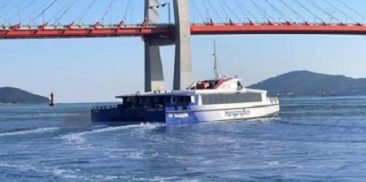视频分类
-
The First Registered Cultural Property of Korea “Korea Electric Power Corporation (KEPCO) Building”
-
视频分类 Registration dateWriterSMG 观看次数2,273
The Korea Electric Power Corporation (KEPCO) was the first building in Korea to have electricity power, which it first used to supply modern electric energy to light up the streetlamps along Namdaemun-ro in Jong-ro on April 10, 1900. The KEPCO building was also the first building to be registered a cultural property of Korea.
Hanseong Electric Power Company, the original name of the Korea Electric Power Company, was the first electric power company in Korea and was established in 1898 by Emperor Gojong, who dreamed of modernizing the nation through the use of electrical power.
Hanseong Electric Power Company’s first major project was the operation of streetcars in Gyeongseong (present-day Seoul), a city which had been previously been populated by rickshaws and bicycles.
In 1965, the Hanseong building was expanded through the construction of two additional floors and designated Registered Cultural Property No. 1 in recognition of its architectural value.
The KEPCO building that once lit up Gyeongseong stood solemnly for 87 as a testament to the development and modernization of Seoul, and its memory and historical presence can still be felt along the streets of Namdaemun-ro.






